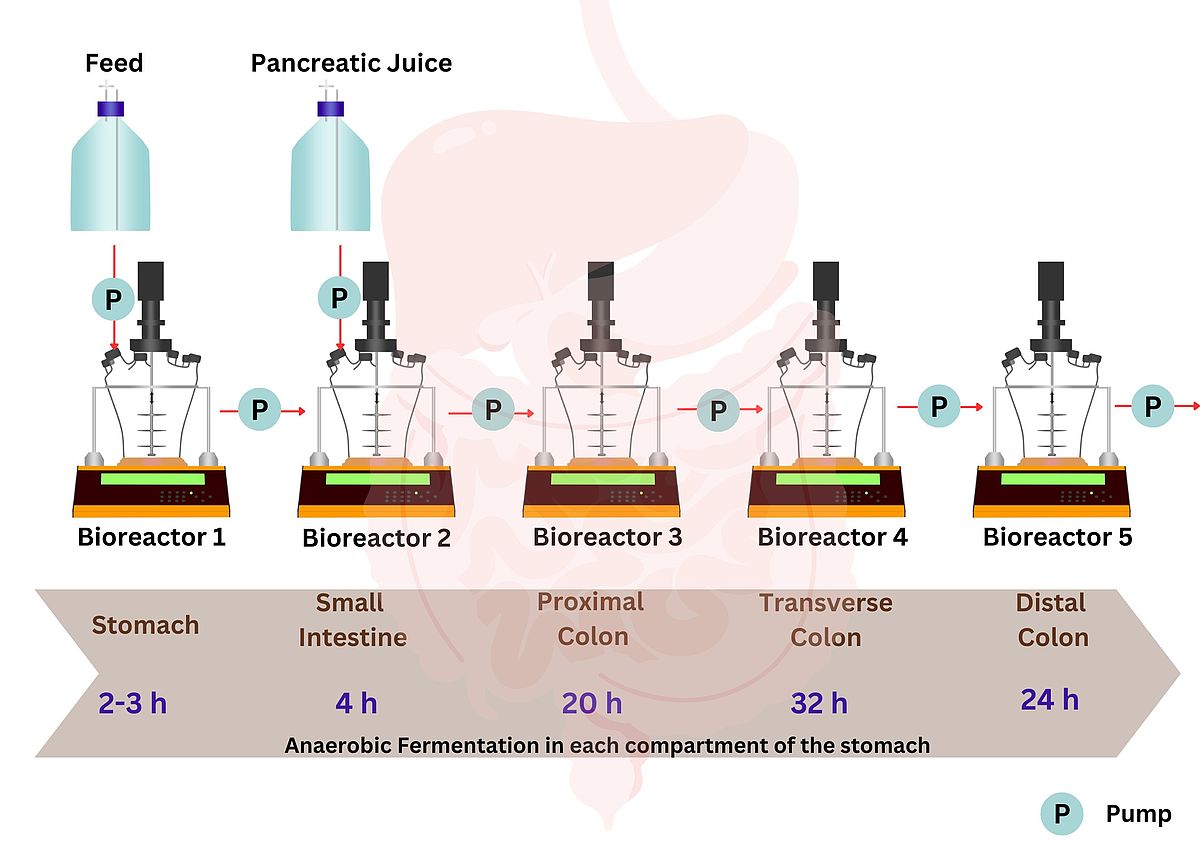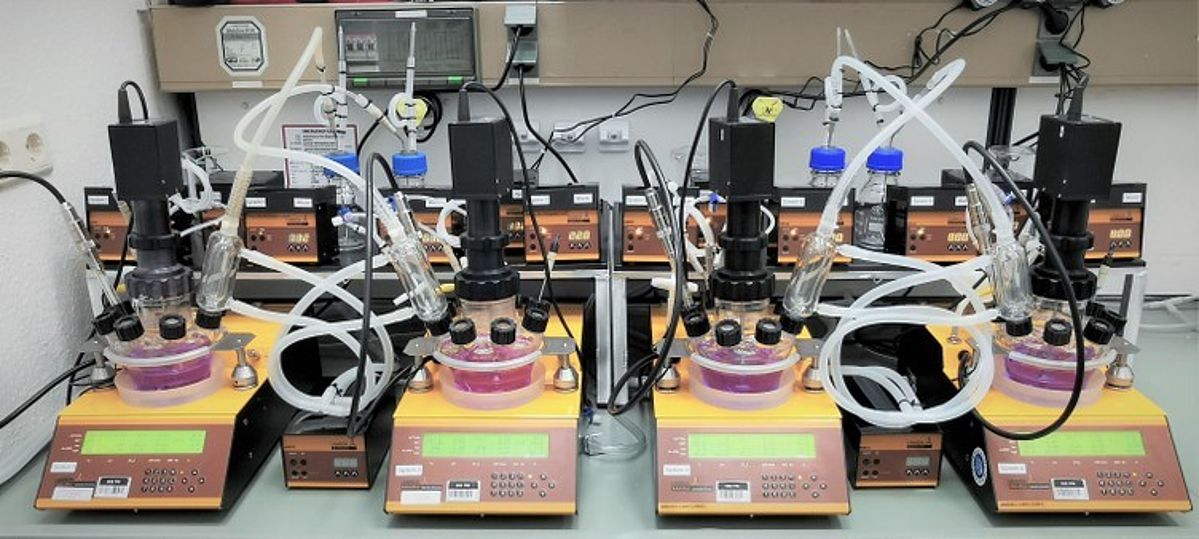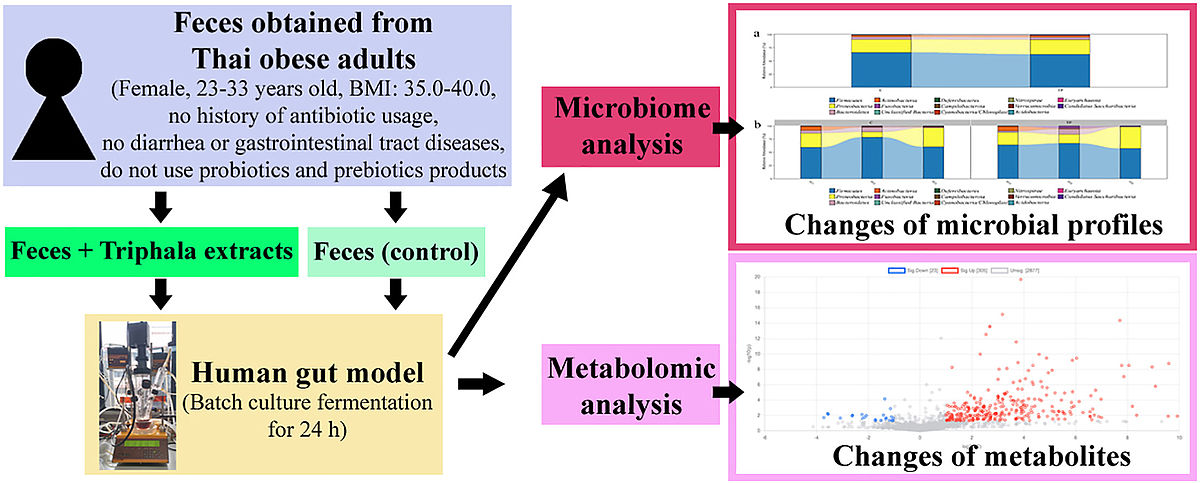Simulating the Gut: Exploring the LAMBDA MINIFOR Multi-Stage Continuous Fermenter
Studying the digestive systems of humans, ruminants, poultry, etc., is critical for various fields, including nutrition, animal science, and human health. In the rapidly expanding field of gut microbiome research, a spectrum of systems with varying levels of complexity has been devised and put into practice with the help of bioreactors. Bioreactor has revolutionized gut simulation research.
LAMBDA MINIFOR Fermenter to mimic the digestive system
Understanding the human gut's intricate ecosystem is crucial for comprehending nutrition, metabolic disorders, and gastrointestinal diseases. The LAMBDA MINIFOR Fermenters excels in replicating human gut conditions in vitro. For example, the SHIME model - The Simulator of Human Intestinal Microbial Ecosystem consists of five reactors, mimicking different sections of the human GI tract. Each reactor is interconnected with a peristaltic pump, allowing it to simulate the gut compartments. The SHIME system primarily focuses on simulating the microbial community of the colon. Given the unavailability of a direct way to obtain a representative microbial sample from the human colon, the fecal microbiota is selected as the inoculum for the colon compartments of the SHIME reactor. The multistage fermenters replicate the in-vivo physiological and microbial parameters, encompassing body temperature, enzyme concentrations, feeding patterns, pH levels, and microbial diversity throughout anatomical compartments.  Fig 1: Simplistic overview of the SHIME model.
Fig 1: Simplistic overview of the SHIME model.
To mimic the parameters of gut, it is essential to choose a system that can regulate all the parameters as like in the digestive tract.
To accelerate the work and save the cost of medium digestive enzymes, it is crucial to work with the lowest possible working volume and, when needed, scale up to a higher volume at a very low cost. Additionally, each reactor should be capable of precisely and automatically regulating the temperature, pH, maintaining anaerobic conditions, recording redox potential etc.
Reactors for Twin SHIME model: Running two sets of 5x MINIFOR Fermenter running in parallel offers a Twin SHIME model. Gastrointestinal Simulation Model TWIN-SHIME helps compare and analyze microbiota from two different sources.
LAMBDA MINIFOR Fermenter to simulate a part of the in-vitro intestinal system: Studying Bacterial Interference of Gut.
The DZIF research group from the University of Bonn utilizes the LAMBDA MINIFOR bioreactor as an in vitro gut model. They are studying to eliminate the pathogenic bacteria from the gut microbiome to prevent life-threatening infections.

Fig 2: The LAMBDA MINIFOR Fermenters running in parallel to mimic the distal colon of the digestive tract.
Researchers employ multiple LAMBDA MINIFOR 0.4L fermenters in parallel to conduct experiments with double determinations, including a control group. Image credit and reference: Institute for Pharmaceutical Microbiology, University of Bonn, Dr. Fabian Grein lab research, accessed 01 October 2023, https://www.pharm-mibi.uni-bonn.de/de/kontakt-1/grein-lab
The research explored the potential of the human gut microbiome as a source of innovative decolonization agents. They employ advanced cultivation techniques, such as co-cultivating various bacteria under anaerobic conditions, to tap into this resource for novel compounds agent pathogenic bacteria.
The team utilizes the LAMBDA MINIFOR Fermenter to create an in vitro gut model to mimic the distal colon of the digestive tract. With that, the team studies the colonization of the system by pathogenic bacteria, with a focus on analyzing the direct antagonistic interactions between enteropathogenic bacteria and the commensal microbiota. Additionally, the system serves as a platform for investigating the effectiveness of various decolonization strategies. Their primary objective is the identification of the most advantageous compositions of well-defined microbial communities, enabling selective and efficient decolonization.
Utilizing a batch fermenter as an in vitro model of the intestinal environment to simulate the co-fermentation of nutritional supplements
Professor Massalin Nakphaichit from Kasetsart University (KU) uses the LAMBDA MINIFOR 0.3L fermenter as an in vitro intestinal model for the anaerobic co-fermentation of Triphala extracts (T. bellirica, T. chebula, and P. emblic) with a 1% (v/v) human fecal suspension. Following a meticulous 24-hour anaerobic fermentation period, a substantial amount of analytical material is generated, facilitating comprehensive insights into microbiota composition and associated metabolic changes. This research methodology serves as a valuable avenue for understanding the intricate interplay between nutritional supplements and the intestinal microbiome.

Figure 3: Graphical summary (Reference and Source: doi.org/10.1016/j.jtcme.2023.02.011) of the methodology for investigating the influences of dietary supplements on the fecal microbiome. Kwandee, P., Somnuk, S., Wanikorn, B., Nakphaichit, M. & Tunsagool, P. (2023). Efficacy of Triphala extracts on the changes of obese fecal microbiome and metabolome in the human gut model. Journal of Traditional and Complementary Medicine, Volume 13, Issue 2, 2023, Pages 207-217, ISSN 2225-4110, doi: 10.1016/j.jtcme.2023.02.01
How does the LAMBDA MINIFOR Fermenters provide an ideal system for simulating the human intestinal microbiome (SHIME) ?
Offers a lowest working volume of 35 ml:
There are few lab-scale fermenters capable of achieving a minimum working volume of 35 ml. The LAMBDA MINIFOR 0.3L fermenter, equipped with a double-jacketed vessel, offers a working volume ranging from 35 to 400 ml, akin to that of a micro bioreactor. This versatile system covers the entire laboratory-scale culture volume spectrum, from 35 ml to 6 liters, allowing for cost-effective interchangeable vessels to increase the working volume.
Maintains anaerobic conditions:
The built-in MASSFLOW system within the fermenter's control unit ensures a regulated supply of N2 gas and, when combined with the vessel's complete closure, creates a perfect anaerobic environment inside. This is crucial for simulating the conditions of the human intestinal microbiome accurately.
Automatic pH regulation:
The system features automatic pH regulation, with the addition of acid and base based on pH variations, ensuring a stable and controlled environment.
Innovative infrared heating for precise temperature regulation:
The MINIFOR Fermenter employs an innovative heating method utilizing infrared radiation from a high-powered, low-heat-capacity spiral heater beneath it. This heat is efficiently directed to the vessel's bottom through a 98% efficient gilded parabolic reflector, ensuring even heating without hot spots, even at low medium levels. Natural thermal convection occurs without the need for additional mixing. The low heat capacity, equivalent to that of one milliliter of water, enables precise temperature control, and the system's design eliminates the need for cables, tubing, connectors, heating blankets, or water supplies, surpassing other heating systems in efficiency and effectiveness.
Innovative fish fin-inspired up-down agitation:
LAMBDA MINIFOR bioreactors use mixing rather than stirring. Customizable stirring plates tailored to the specific needs of the microbes can be effortlessly adjusted to accommodate a new culture volume within one minute.
LAMBDA has introduced a superior vibration mixing system for MINIFOR bioreactors, drawing inspiration from fish fins. This method offers high efficiency while minimizing shear forces, thanks to the unique FiSH-TAIL mixing discs that conclude with fine, elastic materials, replacing the shearing edges found in conventional stirrers.
Real-time monitoring, recording, and control of all culture parameters:
Multiple fermenters, including several MINIFOR – Multistage fermenters, can be simultaneously controlled using PC software like FNet and SIAM. SIAM, renowned for its user-friendliness and cost-effectiveness, can manage up to 99 fermenters and offers extended features. Initially developed for research laboratories, SIAM has proven valuable for pilot plants and small-scale production units. Users can effortlessly create custom applications in a matter of minutes.
Measurement of redox potential:
LAMBDA REDOX allows for the measurement of Red-Ox potential and facilitates digital data transfer to a PC through its RS-485 interface. The data collected can be visualized and recorded using fermentation software such as SIAM, further enhancing the fermenter's capabilities.
For more details regarding the LAMBDA MINIFOR fermenter-bioreactor, please visit www.fermentador-bioreactor.com/features/ and explore the innovations of the LAMBDA MINIFOR fermenter-bioreactor at www.lambda-instruments.com/fermenter-bioreactor/innovations-of-minifor-fermentor-bioreactor/ .
If you have any inquiries, require a quotation, or need pricing information for our fermenter-bioreactor system, feel free to reach out to us athttps://www.lambda-instruments.com/contact-us/